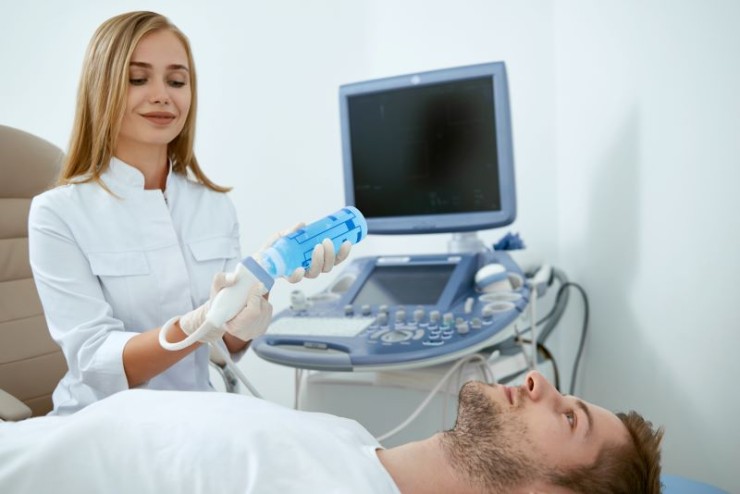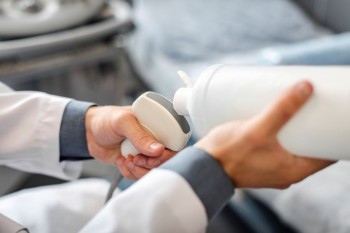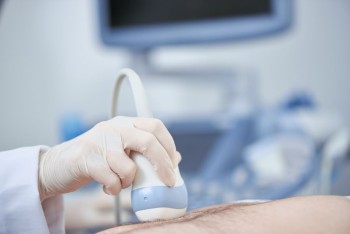
Imagine a diagnostic tool that allows us to peek inside our veins, observing blood flow patterns, and detecting potential issues.
Doppler Venous Both Upper Limbs in India with Cost
Doppler Venous Both Upper Limbs in Detail
Imagine a diagnostic tool that allows us to peek
inside our veins, observing blood flow patterns, and detecting potential
issues. This is precisely what Doppler Venous examination offers, and in this
article, we will delve into the intricacies of Doppler Venous, focusing
specifically on examining both upper limbs.
1. Introduction to
Doppler Venous Examination
Doppler Venous is a non-invasive ultrasound test used to evaluate blood flow in veins. It plays a crucial role in diagnosing vascular conditions, ensuring timely intervention.
2. Importance of Examining Both Upper Limbs
Understanding the vascular health of both upper limbs is vital. It provides a comprehensive picture of the circulatory system, helping identify asymmetries or abnormalities that may have systemic implications.
3. How Doppler Venous Works
Doppler ultrasound uses high-frequency sound waves to create images of blood flow. By analyzing the Doppler shift, which is the change in frequency of the reflected sound waves, the direction and speed of blood flow can be determined.
4. Preparing for a
Doppler Venous Exam
Patients undergoing Doppler Venous are typically advised to wear loose-fitting clothing. The procedure is painless and doesn't require any special preparations.
5. Procedure and Process
Step 1: Patient Positioning
Patients are usually positioned lying down, with the area to be examined exposed.
Step 2: Application of Gel
A water-based gel is applied to the skin to facilitate the movement of the Doppler probe.
Step 3: Use of Doppler Probe
The Doppler probe is then placed on the skin, emitting sound waves that bounce off blood cells.
Step 4: Recording Blood Flow
The equipment records the echoes, creating real-time images of blood flow.
6. Interpreting
Doppler Results Normal Blood Flow
A normal result indicates healthy blood flow without any significant obstructions or irregularities.
Abnormal Findings
Abnormal results may suggest issues like blood clots or venous insufficiency.
7. Conditions Diagnosed through Doppler Venous
Deep Vein Thrombosis (DVT)
Doppler Venous is highly effective in detecting DVT, a condition where blood clots form in deep veins.
Venous Insufficiency
This condition, characterized by impaired blood return to the heart, can be diagnosed through Doppler Venous.
Varicose Veins
Doppler is instrumental in evaluating the severity of varicose veins.
8. Advantages and Limitations of Doppler Venous
Doppler Venous offers real-time imaging without radiation exposure, but its effectiveness can be limited in obese patients.
9. Comparison with Other Diagnostic Methods
Compared to traditional imaging, Doppler provides dynamic insights into blood flow, allowing for a more comprehensive diagnosis.
10. Importance of Early Detection
Early detection of vascular issues through Doppler Venous enables timely intervention, preventing complications.
11. Patient Experience and Comfort
Patients often find Doppler Venous comfortable, with the procedure typically lasting less than an hour.
12. Cost and Accessibility
Doppler Venous is relatively cost-effective compared to some alternative diagnostic methods, and its accessibility is increasing.
13. Expertise of the Sonographer
The skill of the sonographer conducting the Doppler Venous is crucial for accurate results.
14. Future Developments in Doppler Technology
Ongoing advancements in technology promise even more precise and detailed vascular imaging.
15. Conclusion
Doppler Venous examination, especially when applied to both upper limbs, provides invaluable insights into vascular health. Its non-invasiveness, coupled with the ability to detect a range of conditions, makes it a cornerstone in modern diagnostic medicine.
FAQs About Doppler Venous Examination
1. Is Doppler Venous painful?
No, Doppler Venous is a painless procedure. Patients might feel slight pressure from the probe, but discomfort is minimal.
2. How long does a Doppler Venous exam take?
The process usually lasts under sixty minutes.
3. Are there any risks associated with Doppler Venous?
Doppler Venous is considered safe with no known risks or side effects.
4. Can Doppler Venous be used during pregnancy?
Yes, Doppler Venous is safe during pregnancy and is often used to monitor blood flow in the uterine arteries.
5. Are the results of Doppler Venous always accurate?
While Doppler Venous is highly accurate, the expertise of the sonographer plays a crucial role in obtaining precise results.
6. Can Doppler Venous detect arterial issues as well?
No, Doppler Venous specifically focuses on venous blood flow. For arterial issues, a separate test called Doppler Arterial may be conducted.
7. Is Doppler Venous suitable for all age groups?
Yes, Doppler Venous is safe and applicable to individuals of all age groups, from infants to the elderly.
8. Can Doppler Venous diagnose heart-related issues?
Doppler Venous primarily focuses on the veins, but abnormalities detected may prompt further cardiac evaluations.
(0)
Login to continue



